Getting Scuba Certified in Koh Tao, Thailand
Getting Scuba Certified in Koh Tao, Thailand
Thailand, regardless what you go for, is a very special place that attracts every kind of traveler, for good reason. It’s a tropical paradise full of culture, endless smiles, and some of the best food you will ever try. However, if you have a bit of an adventurous spirit, you may find yourself in this country for a particular reason: to get scuba-certified.
There are many places in Thailand where you can get scuba-certified. After a lot of research, we decided to get our certifications on the small island of Koh Tao, and it’s hard to imagine we would have had a great experience elsewhere.
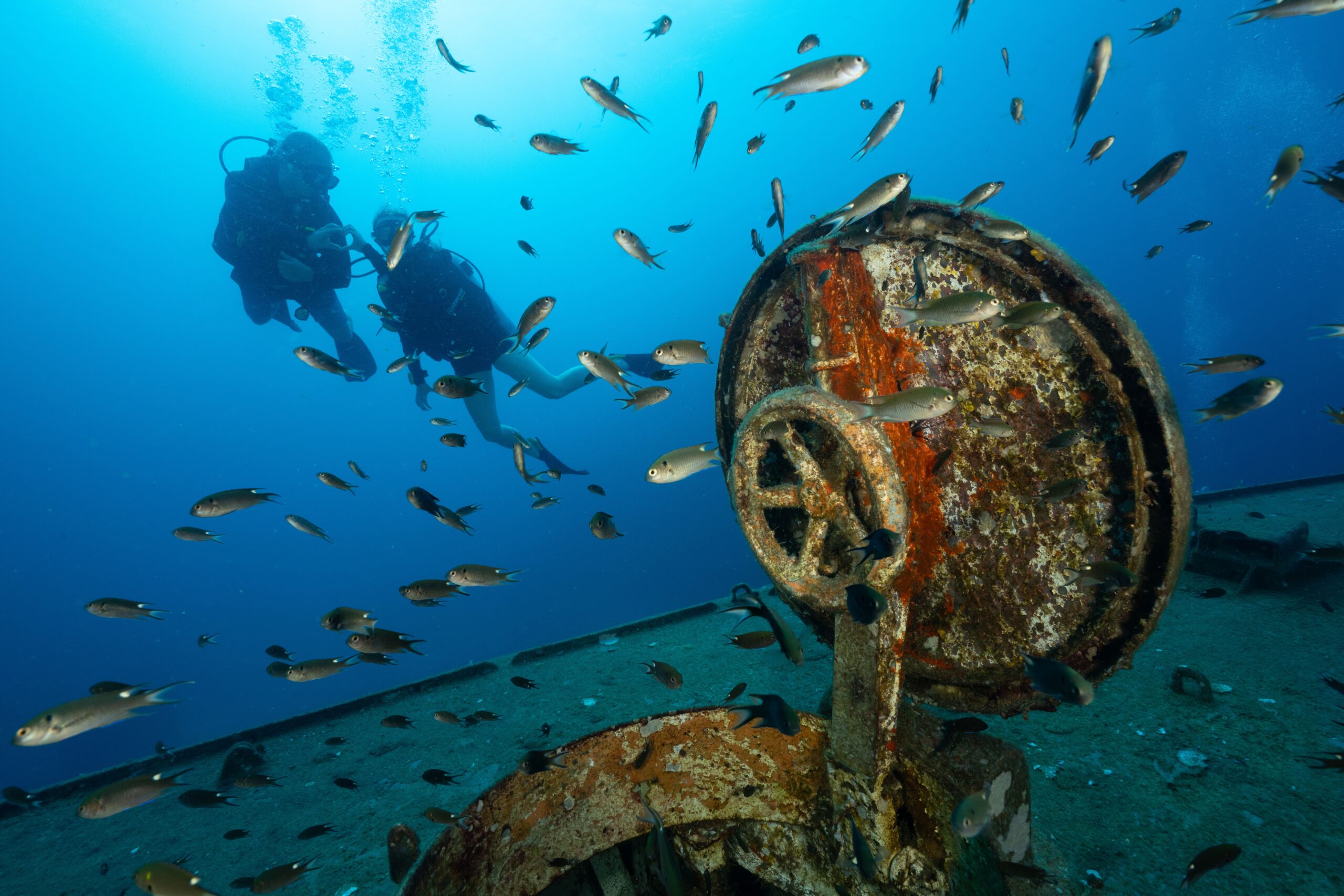
Koh Tao
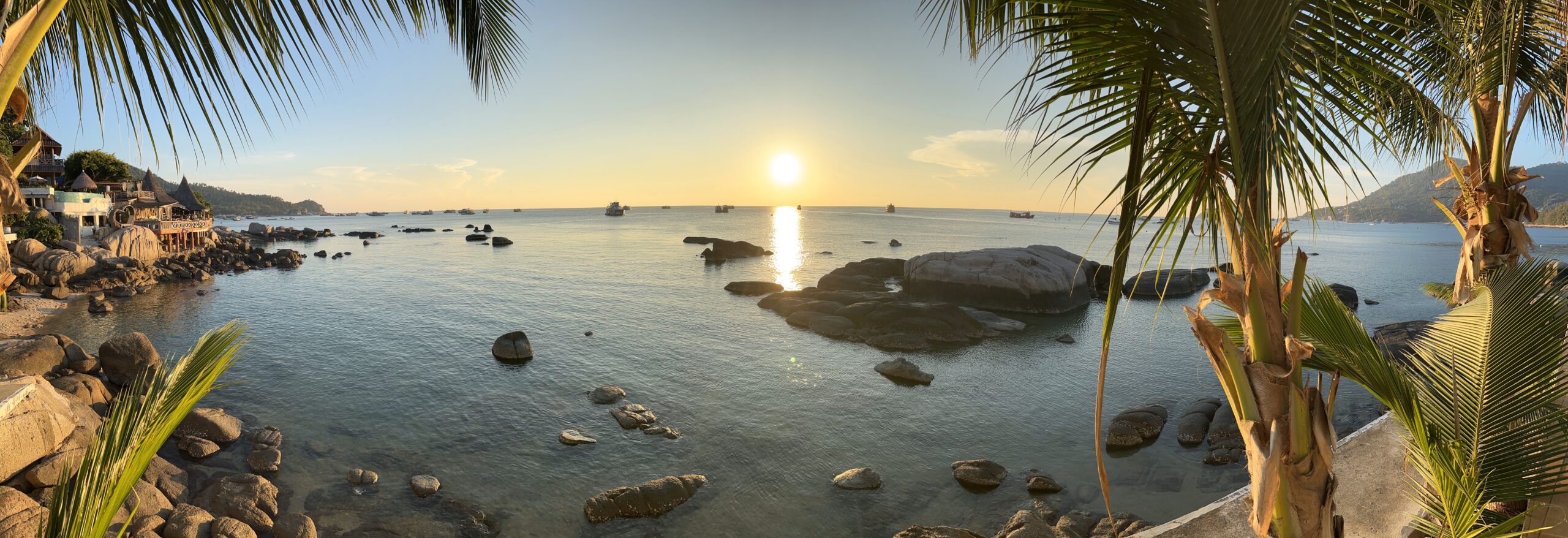
View from our hotel pool.
Koh Tao is a small island that sits in the Bay of Thailand. It’s best known for its restaurants, beaches, nightlife, marine wildlife, snorkeling, and scuba diving. Its tropical coral reefs that line the shorelines are known for their abundant marine life, including whale sharks, rays, green turtles, and many other species.
A trip here is unlike a trip to anywhere else in Thailand. Every meal we had was cheap and delicious, the people were vibrant and happy, the sunsets were 10/10 and everybody seemed removed from our hectic world. Sometimes you find a place traveling that seems to attract people and cultures from all over the world that fit perfectly in one place. Koh Tao, Thailand, was absolutely one of the destinations. We traveled all over Thailand for 3 weeks. However, our 5 days in Koh Tao were by far the highlight of our time here.
Pick your Dive Shop
If you’ve decided to come to Koh Tao for your Scuba experience, the first thing to do is find a dive shop that will fit your needs. This wasn’t an easy task for us because there were, so many dive shops on the island. To make it more difficult most of the dive shops we looked into seemed to have very favorable reviews.
We ended up going with Koh Tao Divers. There were many factors helping us to decide with them. First, they have been around for ages, earning them the title of being the first dive center on Koh Tao. They have very favorable reviews and competitive prices. We liked the fact that they had a 3:1 diver-to-instructor ratio, which gave us confidence that we would receive the 1 on 1 education that we were paying for. They also seemed to be in a very centralized and convenient location on the island.
Koh Tao Divers has a number of different courses to select from. We elected to take part in their 3-day Beginner Open Water course. However, they also have Advanced Open Water courses, refresher courses, Nitrox courses, Navigation courses, Night diving courses, etc.
Here is a link to take you to the Koh Tao Divers website, and if you go with this dive shop, we highly recommend requesting Israel as your instructor. We had so much fun learning under his guidance and he made the whole scuba experience great from start to end.
Koh Tao Divers

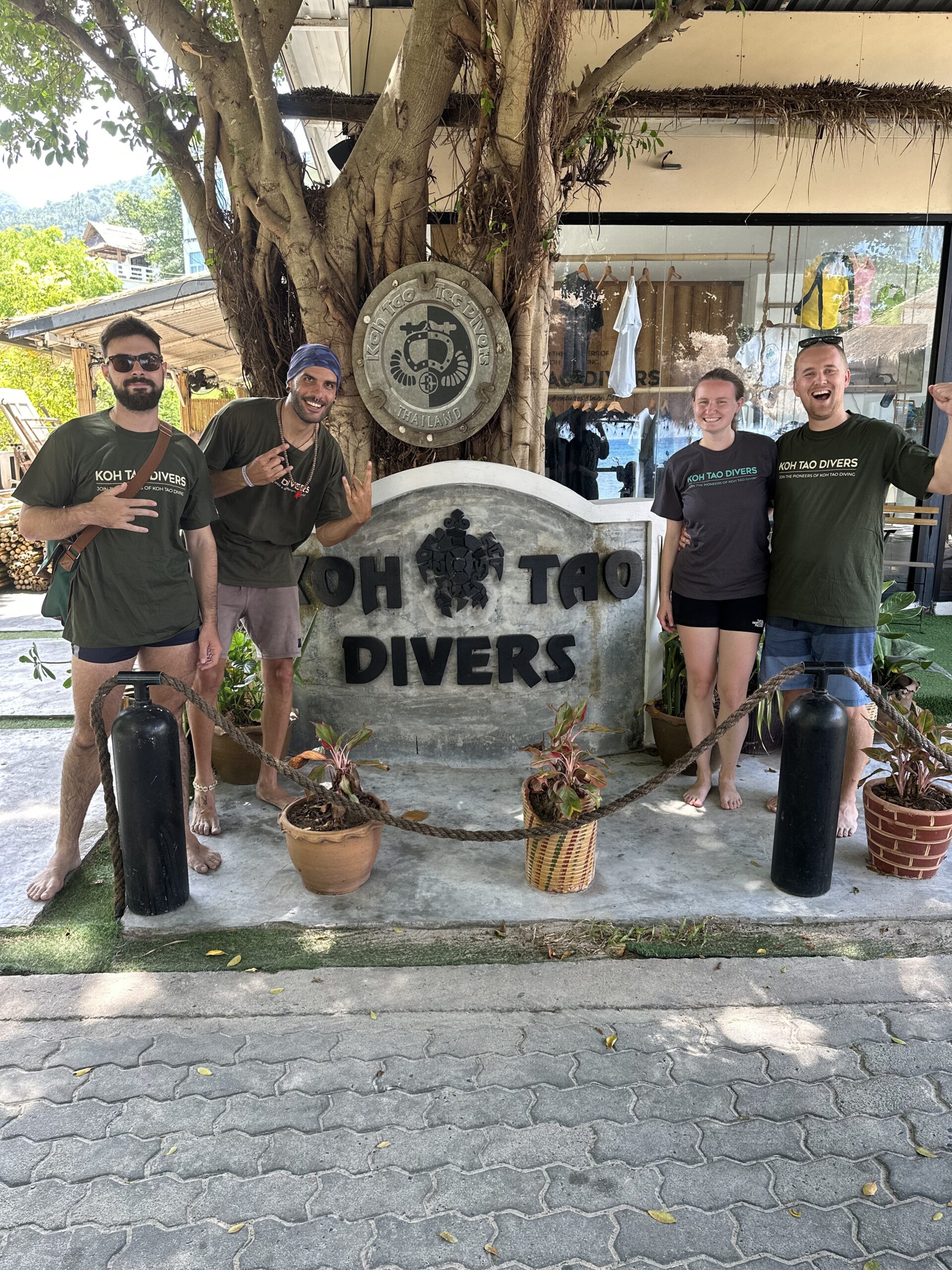
The S.C.U.B.A Experience
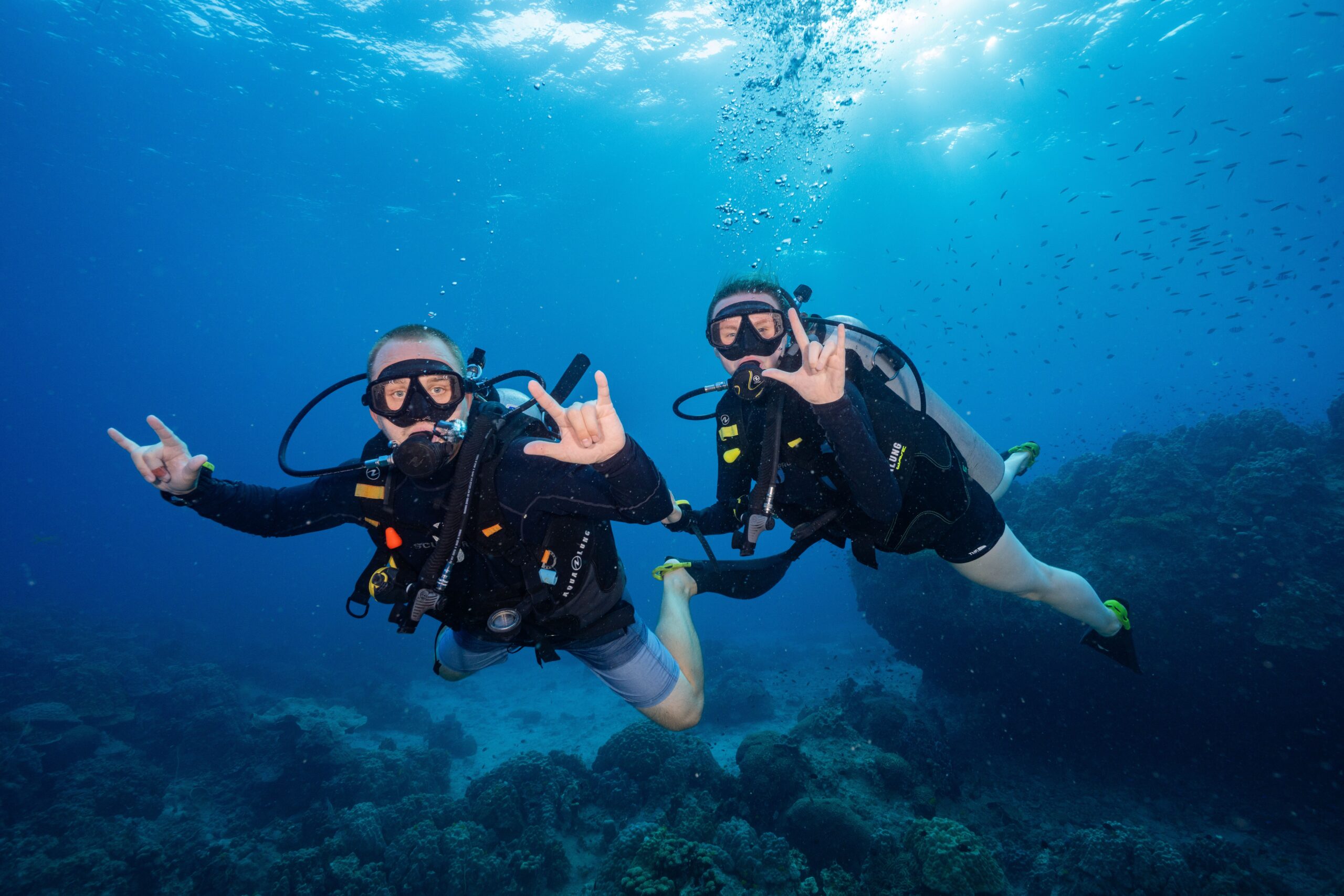

Beginner Open Water Certification
We had never scuba-dived before, so we were hesitant to do anything that would require more of a commitment than getting our beginner open water certifications. However, in retrospect, if we knew how much we would love scuba diving, we would have taken the advanced open water course.
Most beginner open water courses look relatively the same. Since we went with Koh Tao Divers, I’ll reference their course to explain what you can expect.
The course includes a 3-day experience with a combination of classroom lectures, skills learning and assessments in the water, and the dives themselves.
Day 1:
You will start with a couple of hours of lecture covering the material that you would have already been required to read through before arrival. After a lunch break, you will be taken to a dive site to start getting accustomed to the scuba gear and to start practicing your skills. We ended up doing two underwater dives on our first day. The first one is in very shallow water.
Day 2:
You will once again start with another couple of hours of lecture. After another lunch break, they will take you to your first “real dives”. The sites they chose for day two had a jump-up in technicality, but I didn’t find it overly stressful. We completed two dives on day 2.
Day 3:
There was no classroom session on day 3. We had an early start and were taken straight to our first dive site. On day 3, you are already expected to have completed a demonstration of your skills. The only thing left is to put them to use. The dives on day 3 are the first time you go to the 18-meter depth required to complete your open water certification.
Dive Sights
Dive #1
Laem Thian Bay
50 min – 5.8 meters
This was our first time breathing underwater! We took the boat to a shallow bay, and our instructor had us snorkel towards the beach until we were only under 5-6 feet of water. It was here that we practiced our skills and learned how to operate most of our scuba gear. Ironically this was the hardest dive of my whole experience. There was something about being only under 5 feet of water on your knees that made me just want to stand up. A lot of dive shops might use a pool for this first session but I was glad to do this first dive in the ocean so that I could start to become comfortable. Immediately after our first “practice dive” we did our first real scuba dive. We left our comfortable beach and dove out into the open ocean towards the dive boat.
Dive #2
Mao Bay
43 min – 11.8 meters
After our skills dive, it was time to step it up with something more technical. We left our dive boat and had to swim a couple hundred meters to a rocky cliff lining the shore. It was at this cliff that we started our dive. This dive was difficult because our instructor had us weaving above, below, in, and around the rocky cliffs the whole time. This forced us to start to learn better buoyancy.
Dive #3
Japanese Gardens
51 min – 5.4 meters
Our dive boat took us to the famous Nang Yuan Island, which, if you have googled Koh Tao, images of this island and beach have most likely drawn your attention. This might very well be the most beautiful beach I’ve ever seen. After leaving the boat we swam to shallower waters and practiced and completed our skills for our open water certs. Most of the skills weren’t too bad, the first one being the act of taking off your mask and doing a 360 under water without being able to see. After the 360 you have to put your mask back on and clear the water from it. This was the only skill that any of us really struggled with. This dive site was under deeper water than our first skills dive. We were probably at 10-12 feet.
Dive #4
Japanese Gardens
57 min – 12.4 meters
After a break at our boat, we put on a new tank and dived into the famous Japanese Gardens. This reef was so healthy, and the abundance of marine life was very evident. This ended up being our longest dive getting our certifications, and something about it felt so zen and just put me at peace. After this dive, I started to feel much more confident as a scuba diver.
Dive #5
White Rock Pinnacle
42 min – 13.7 meters
On the 3rd and final day, we left behind the classroom and skills dives and focused on diving in the open water. We were offered by a local cameraman and scuba diver to join us for a fee to take pictures of our experience. This was worth every single penny, and every photo you see of the dives themselves was taken by him. We paid roughly $100 USD for this service. The first dive was terrific as we dove around a gigantic submerged pinnacle. Beautiful reefs and wildlife surrounded the pinnacle.
Dive #6
Thai Navy Shipwreck (313)
36 min – 18 meters
This is the dive that will forever be ingrained in my memory. It was indeed one of the once-in-a-lifetime experiences that will make me smile for the rest of my life. The Thai Navy purposely submerged a retired ship for recreational diving and reef health. As we descended, the ship slowly came into view. We were able to swim around the canon at the front of this ship and pose for photos at the ship’s windows. I never wanted this dive to end and it’s something I will revisit in my mind for the rest of my life.

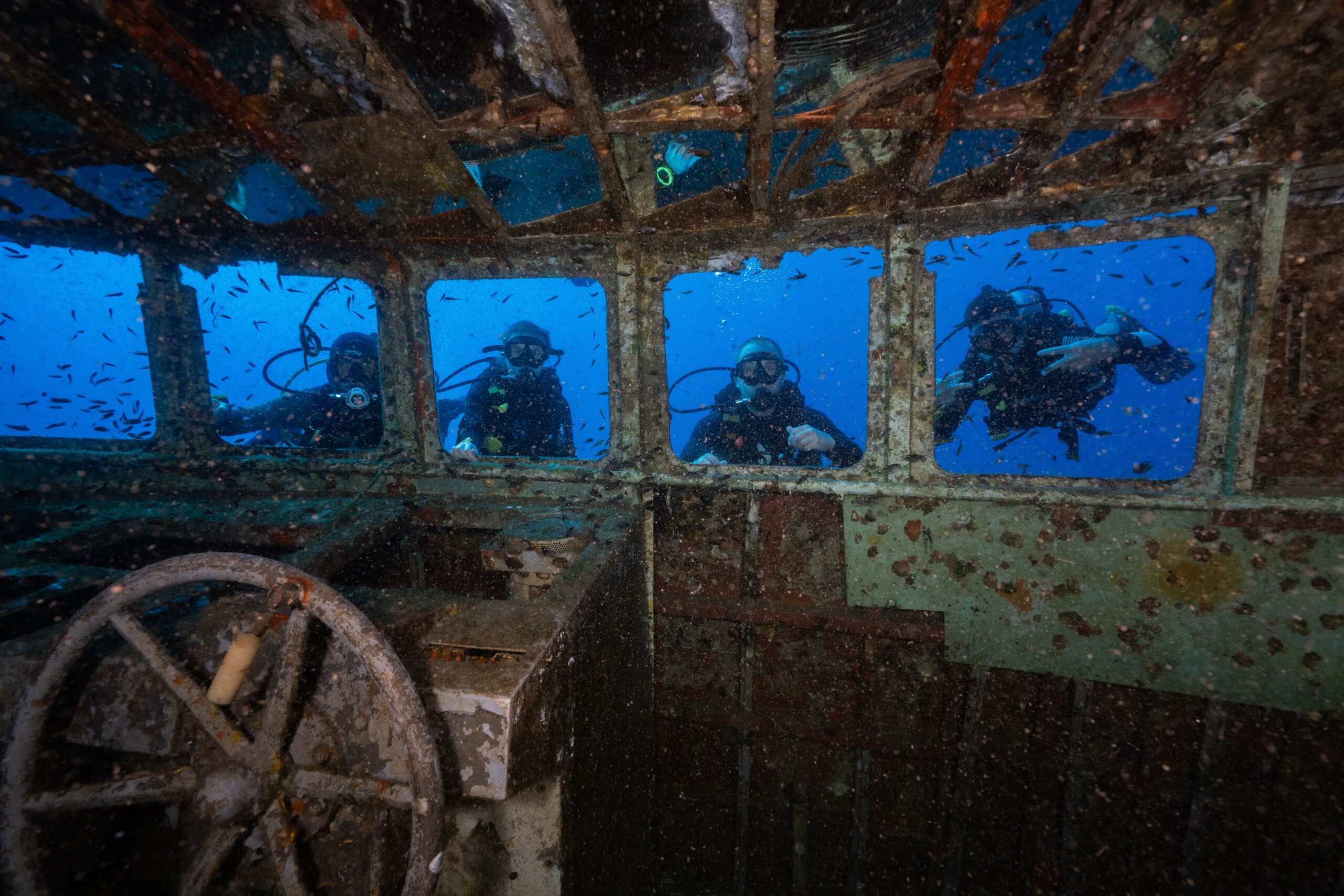
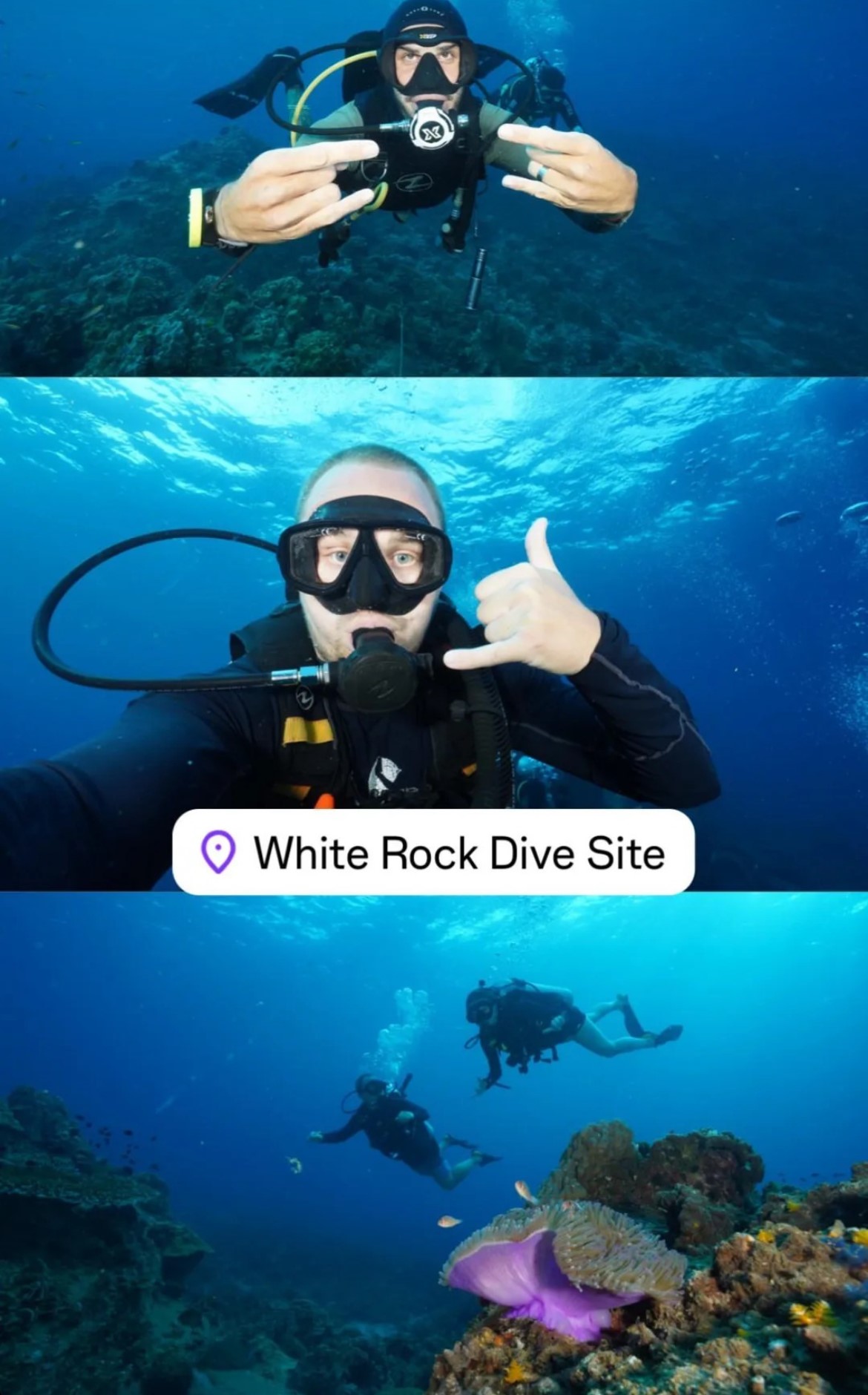
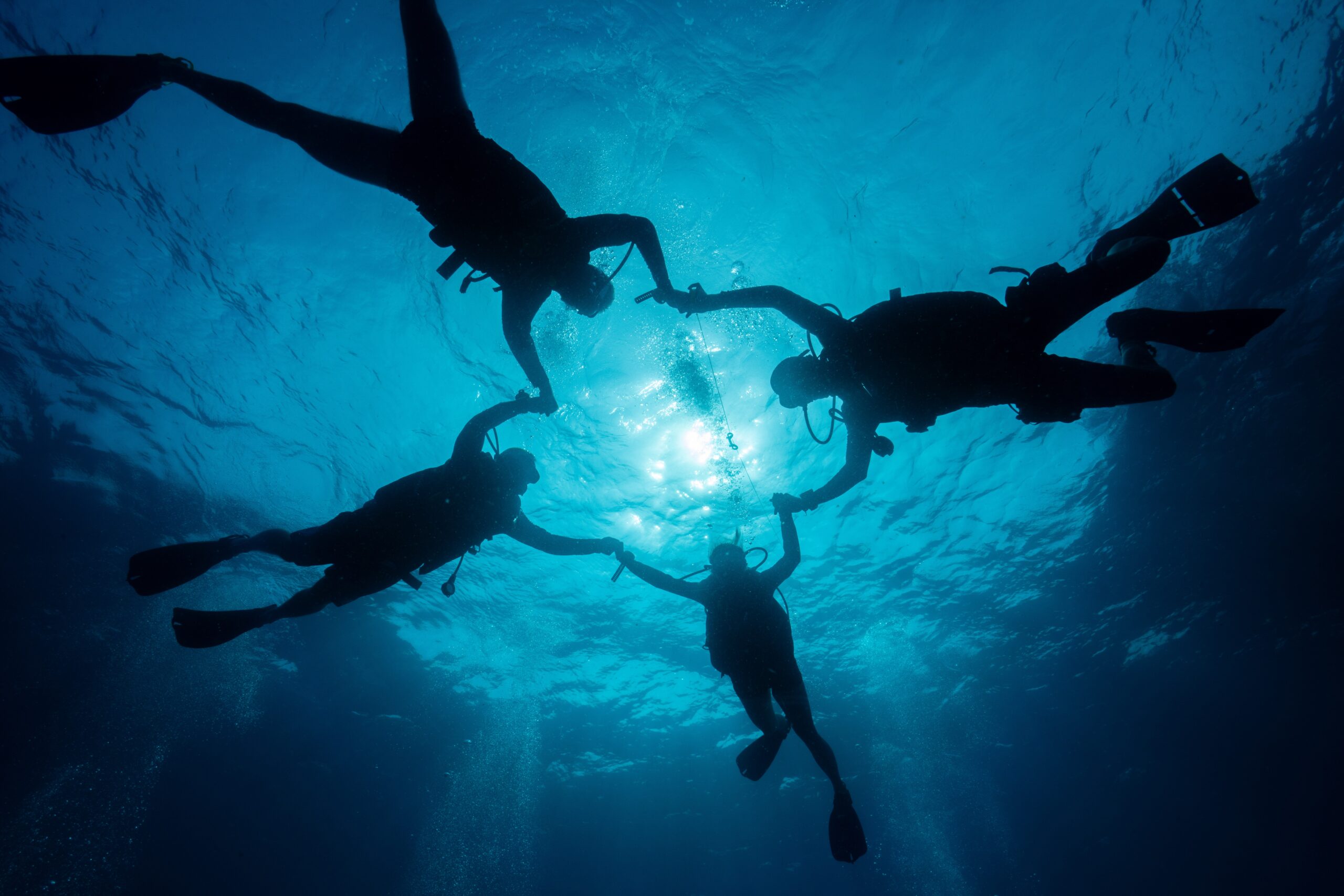
How to get there
It is not overall difficult to get to Koh Tao. However, it does take some work.
Most people access Thailand by the Suvarnabhumi International Airport in Bangkok.
From Bangkok, you can choose to take a ferry directly to Koh Tao, which can be quite a long ferry ride.
The other option would be to fly from Bangkok to Koh Samui. From here, you can take the ferry directly to Koh Tao. This ferry ride was roughly only 1 hour.
We chose the latter option, which worked out well because we were able to spend 1 night on either end of our time in Koh Tao. Koh Samui is definitely worth the time if you can spare it. It’s a beautiful island home to possibly the coolest airport I’ve ever flown through, being almost entirely outdoors.